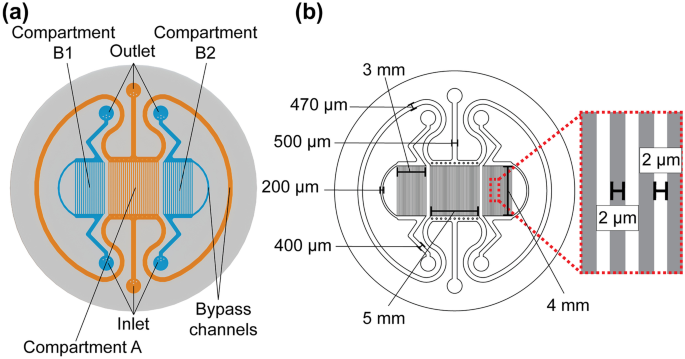Compartmentalized organ-on-a-chip structure for spatiotemporal control of oxygen microenvironments
Abstract
Hypoxia is a condition where tissue oxygen levels fall below normal levels. In locally induced hypoxia due to blood vessel blockage, oxygen delivery becomes compromised. The site where blood flow is diminished the most forms a zero-oxygen core, and different oxygenation zones form around this core with varying oxygen concentrations. Naturally, these differing oxygen microenvironments drive cells to respond according to their oxygenation status. To study these cellular processes in laboratory settings, the cellular gas microenvironments should be controlled rapidly and precisely. In this study, we propose an organ-on-a-chip device that provides control over the oxygen environments in three separate compartments as well as the possibility of rapidly changing the corresponding oxygen concentrations. The proposed device includes a microfluidic channel structure with three separate arrays of narrow microchannels that guide gas mixtures with desired oxygen concentrations to diffuse through a thin gas-permeable membrane into cell culture areas. The proposed microfluidic channel structure is characterized using a 2D ratiometric oxygen imaging system, and the measurements confirm that the oxygen concentrations at the cell culture surface can be modulated in a few minutes. The structure is capable of creating hypoxic oxygen tension, and distinct oxygen environments can be generated simultaneously in the three compartments. By combining the microfluidic channel structure with an open-well coculture device, multicellular cultures can be established together with compartmentalized oxygen environment modulation. We demonstrate that the proposed compartmentalized organ-on-a-chip structure is suitable for cell culture.


 求助内容:
求助内容: 应助结果提醒方式:
应助结果提醒方式:


